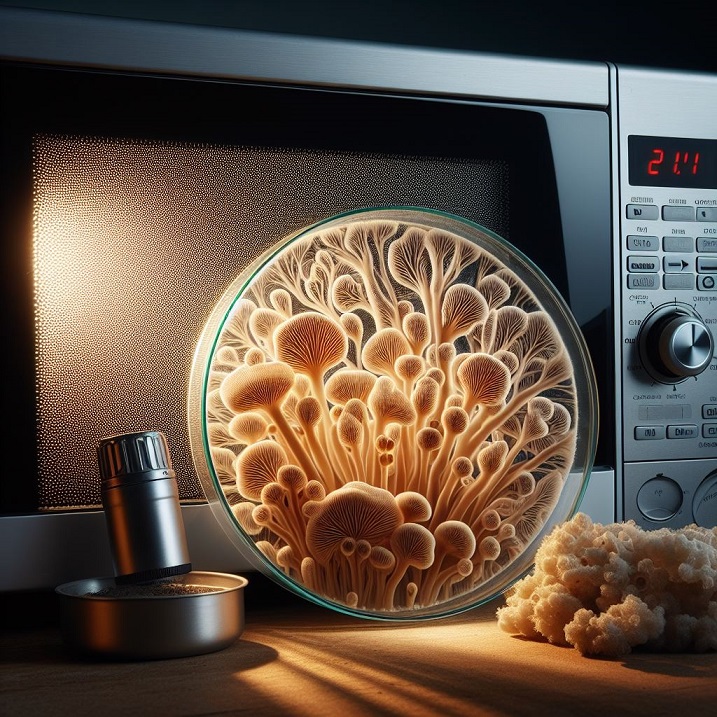Fungus is a type of organism that includes mushrooms, molds, yeasts, and other forms of life that feed on organic matter. Fungus can grow on various types of food, such as bread, cheese, fruits, and vegetables, and cause spoilage, discoloration, and unpleasant odors. Some types of fungus can also produce toxins that can harm human health, such as aflatoxins, mycotoxins, and ergot alkaloids.
What Happens to Fungus in a Microwave?
You may wonder if you can kill fungus by microwaving it, or if you can eat food that has a bit of mold on it after treating it in the microwave. The answer is no, you should not do that. Here are some reasons why microwaving fungus is not a good idea.
Firstly, microwaving fungus does not guarantee that it will be completely destroyed. Microwaves work by heating up the water molecules in food, which causes them to vibrate and generate heat.
However, microwaves may not penetrate the food evenly, and some parts may remain cold or undercooked. This means that some fungus may survive the microwaving process and continue to grow or release toxins.
Secondly, microwaving fungus does not remove the toxins that it may have produced. Even if you manage to kill all the fungus in your food, the toxins that they have released may still remain in the food.
These toxins are not affected by microwaves, and they can cause various symptoms, such as nausea, vomiting, diarrhea, headaches, allergic reactions, and even organ damage or cancer. Therefore, microwaving fungus does not make your food safe to eat.
Thirdly, microwaving fungus may alter the taste and texture of your food. Fungus can affect the flavor, color, and texture of your food, making it unappetizing or inedible. Microwaving fungus may worsen these effects, as it can dry out, burn, or overcook your food.
Moreover, microwaving fungus may also create unpleasant smells, as the fungus may release volatile compounds that can linger in your microwave or kitchen.

How to Prevent Fungus From Growing on Your Food
The best way to prevent fungus from growing on your food is to store it properly, in a cool, dry, and dark place, and to consume it before it expires.
If you notice any signs of fungus on your food, such as spots, fuzz, slime, or odors, you should discard the food immediately, and not try to salvage it by cutting off the affected parts or microwaving it. You should also clean your microwave regularly, and wipe any spills or crumbs that may attract fungus.
Microwaving fungus is not a safe or effective method of dealing with it. It may not kill all the fungus, it may not eliminate the toxins, and it may ruin your food. Therefore, you should avoid microwaving fungus, and instead, follow proper food hygiene and storage practices to keep your food fresh and fungus-free.
Explore Related Articles

Why a Horrific Photo Showing the Aftermath of a Man’s Turkish...
A disturbing photo showing the aftermath of a Turkish hair transplant has been spreading on the internet. The photo shows how a man's head was swollen to a huge size, looking like the hero of the video game Bonk's Revenge, a 2D platformer set in prehistory . The photo...
Anonymous 39 Year Old Woman Reveals How the 90-30-50 Diet Plan...
As you may or may not know, amidst all the tips we get about viral news, some people send us personal stories about their life, that may be uplifting to others. One recent submission we received was from an anonymous woman who claims the 90-30-50 diet plan eating method...
6 Celebrities Who Have Been Accused of Having BBL Surgery
A Brazilian butt lift, or BBL, is a cosmetic procedure that involves transferring fat from other parts of the body to the buttocks, to create a fuller and rounder shape. The surgery is popular among women who want to enhance their curves and achieve a more hourglass figure.
However,...






